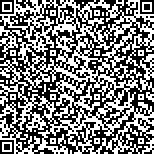本文已被:浏览 48次 下载 24次
投稿时间:2024-04-18 网络发布日期:2025-05-20
投稿时间:2024-04-18 网络发布日期:2025-05-20
中文摘要: 目的 探讨老年高血压患者睡眠障碍的影响因素,构建对应的列线图预测模型,并验证该模型效能。方法 回顾性分析 2021年12月至 2022年12月于长沙市第三医院就诊的 420例老年高血压患者的临床资料,经计算机产生随机数表法以 7∶3将其分为训练集(294例)、检验集(126例)。根据近 12个月内患者睡眠情况,将训练集中合并睡眠障碍的患者作为睡眠障碍组(n=144),未合并患者作为无睡眠障碍组(n=150)。采用 logistic回归模型分析老年高血压患者睡眠障碍的影响因素,建立回归方程,构建列线图预测模型;采用受试者工作特征(ROC)曲线验证模型效能,校准(Calibration)曲线评价模型校准能力。结果 训练集、检验集临床特征比较差异无统计学意义(P>0.05);多因素 logistic回归分析显示,年龄大、女性、不宁腿综合征、汉密尔顿焦虑量表(HAMA)评分高、使用 β.受体阻断剂是老年高血压患者睡眠障碍的危险因素(P<0.05)家庭人均收入高是保护因素(P<0.05)。据以上数据建立老年高血压患者睡眠障碍的列线图预测模型: Y=0.733×年龄,+0.847×女性 +0.965×家庭人均收入 +0.885×不宁腿综合征 +0.719 ×HAMA评分 +0.954×β.受体阻断剂。经 ROC曲线、 Calibration曲线评价,列线图模型有较好的预测效能(检验集AUC为 0.924,灵敏度为 87.50%,特异度为 90.32%)和校准能力(检验集一致性指数为 0.925)。结论 老年高血压患者睡眠障碍的危险因素包括年龄大、女性、不宁腿综合征、 HAMA评分高、使用 β.受体阻断剂,保护因素为家庭人均收入高,以上述因素为依据构建的列线图模型对老年高血压患者睡眠障碍的预测效能良好。
Abstract:Objective To investigate the factors influencing sleep disorders in elderly hypertensive patients, construct a corresponding nomogram prediction model, and validate its efficacy. Methods A retrospective analysis was conduct.ed on the clinical data of 420 elderly hypertensive patients who visited the Third Hospital of Changsha from December2021 to December 2022. The patients were randomly divided into a training set (294 cases) and a test set (126 cases) using a computer.generated random number table. All patients were followed up for 12 months. In the training set, patients with sleep disorders were selected as sleep disorder group (n=144) , and those without sleep disorders were selected as non.sleep disorder group (n=150) . The factors influencing sleep disorders in elderly hypertensive patients were analyzed using a logistic regression model. A regression equation was established and a nomogram prediction model was constructed. The model's efficacy was verified using the receiver operating characteristic (ROC) curve, and the calibration curve was used to evaluate the model's calibration ability. Results The comparison of clinical characteristics between the training and test sets showed no statistically significant difference (P>0.05) . Logistic regression analysis showed that older age, female, restless leg syndrome, high HAMA score, and use of β-receptor blockers were risk factors for sleep disorders in elderly hypertensive patients (P<0.05) , while family per capita income was a protective factor (P<0.05) . A nomogram prediction model for sleep disorders in elderly hypertensive patients was established based on the data above: Y=0.733×age+0.847×women + 0.965×percapita family income + 0.885×restless legs syndrome + 0.719×HAMA score + 0.954×β-receptor blockers. The evaluation of ROC curve and Calibration curve showed that the nomogram model had good prediction performance (AUC of test set was 0.924, with a sensitivity of 87.50% and a specificity of 90.32%) and calibration ability (concordance index of test set was 0.925). Conclusion The risk factors of sleep disorders in elderly hypertensive patients include older age, female, restless leg syndrome, high HAMA score, and use of β-receptor blockers, and high family per capita income is a protective factor. The nomogram prediction model based on the above factors has a good prediction effect on sleep disorder in elderly hypertensive patients.
keywords: Hypertension Sleep disorders Nomogram prediction model Restless leg syndrome Hamilton anxiety scale
文章编号: 中图分类号: 文献标志码:A
基金项目:湖南省保健专项资金科研课题(B2020-08)
附件
| 作者 | 单位 |
| 袁秀英 | 1.湖南大学附属长沙医院 长沙市第三医院中西医结合科,湖南 长沙 410015 |
| 戴湘怡 | 1.湖南大学附属长沙医院 长沙市第三医院中西医结合科,湖南 长沙 410015 |
| 廖娟 | 2.湖南大学附属长沙医院 长沙市第三医院老年病科,湖南 长沙 410015 |
引用文本:
袁秀英,戴湘怡,廖娟.老年高血压患者睡眠障碍的影响因素及列线图预测模型构建[J].中国临床研究,2025,38(5):776-781.
袁秀英,戴湘怡,廖娟.老年高血压患者睡眠障碍的影响因素及列线图预测模型构建[J].中国临床研究,2025,38(5):776-781.
